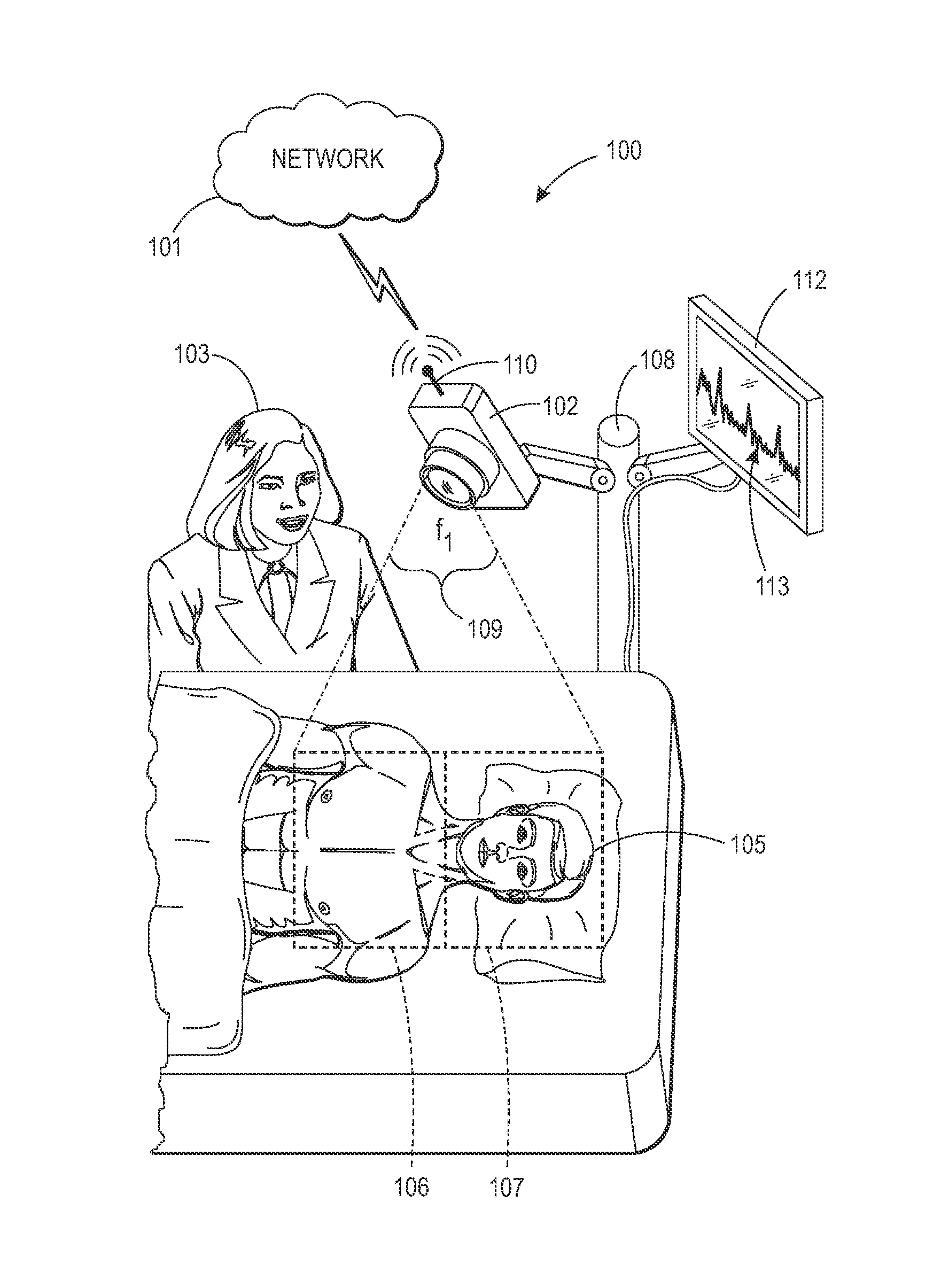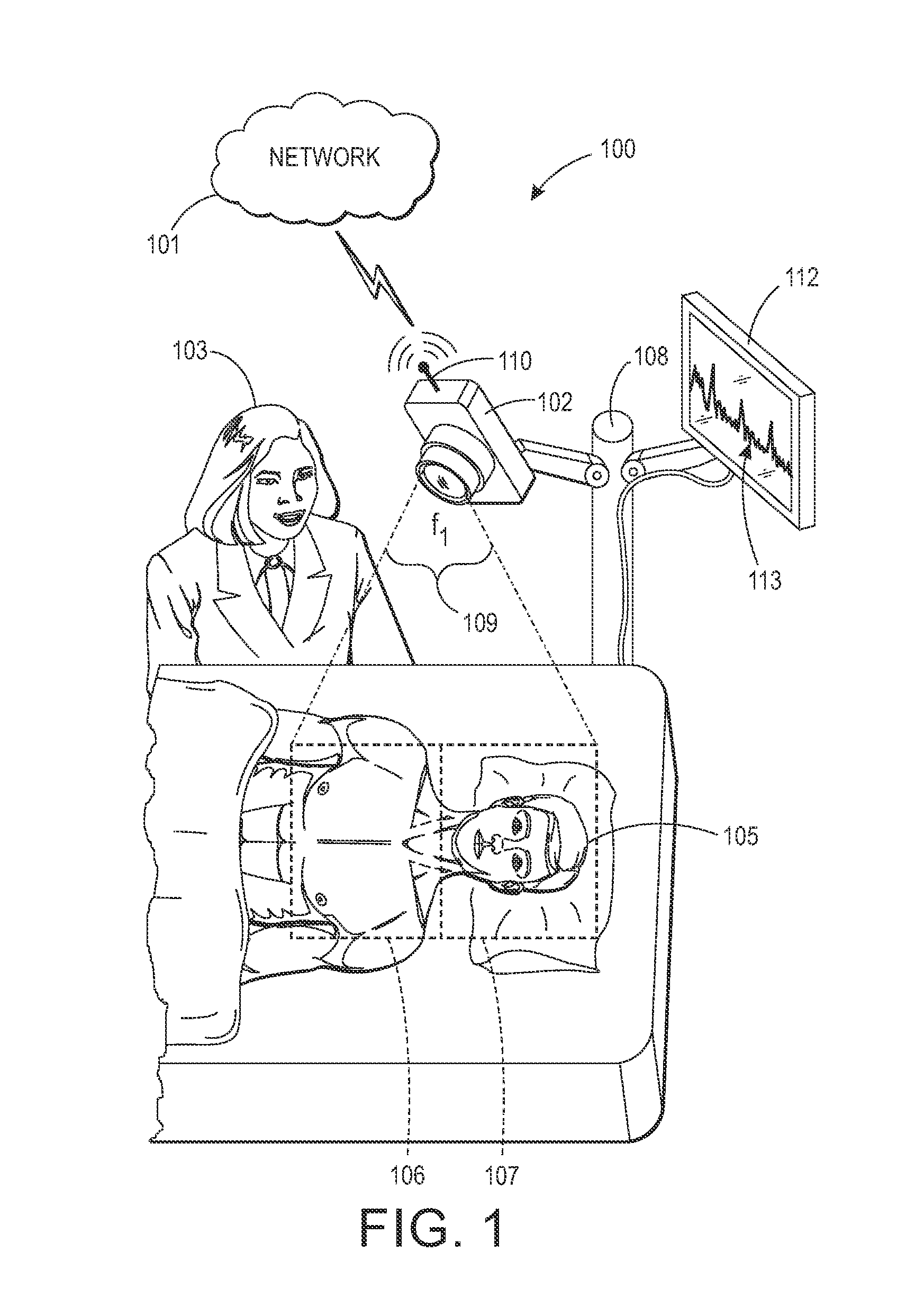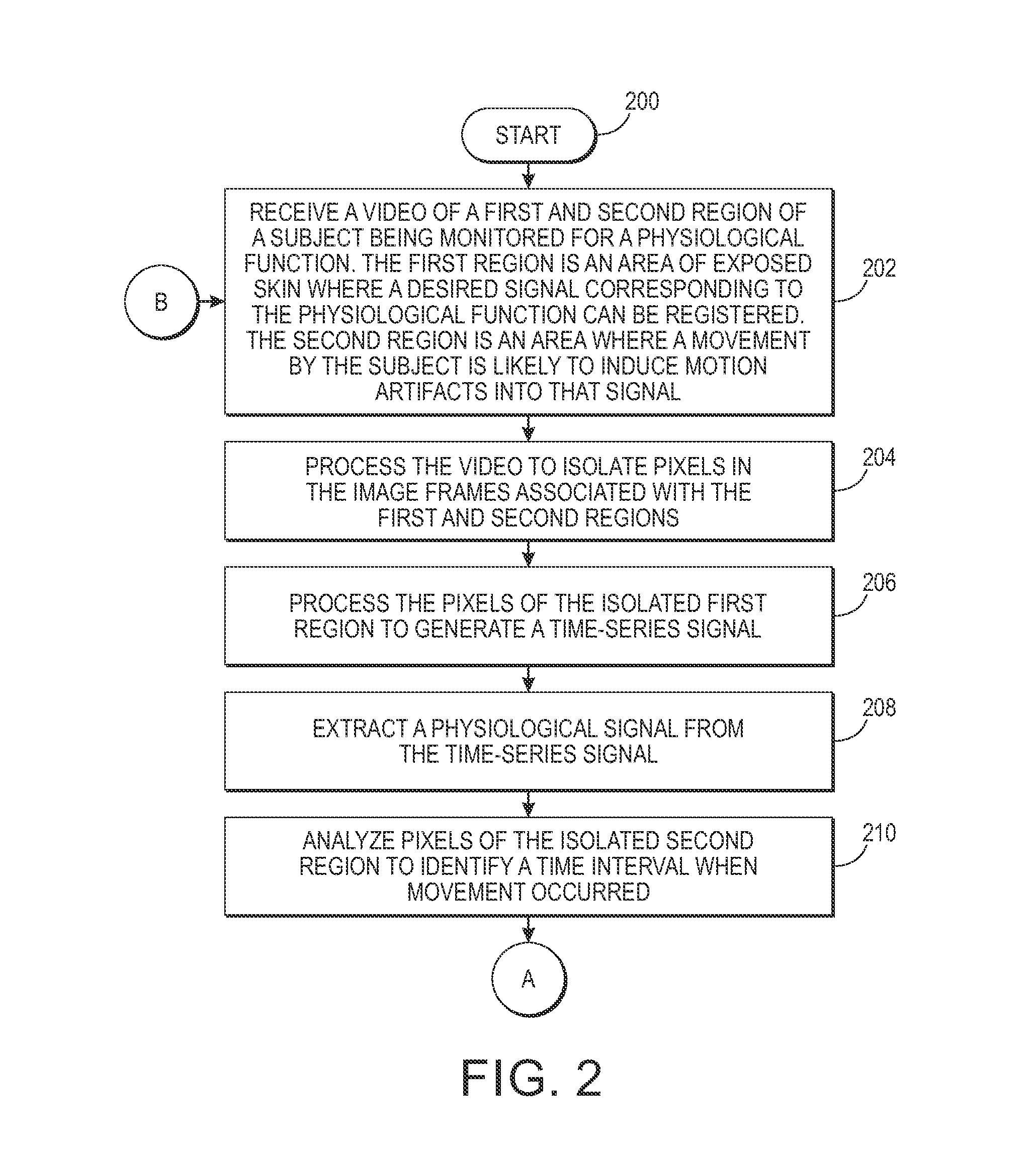Compensating for motion induced artifacts in a physiological signal extracted from a single video
a technology of physiological signals and artifacts, applied in image enhancement, image analysis, instruments, etc., can solve the problems of psychological dependence, loss of dignity, and the more likely to suffer from such negative effects of continuous monitoring
- Summary
- Abstract
- Description
- Claims
- Application Information
AI Technical Summary
Benefits of technology
Problems solved by technology
Method used
Image
Examples
Embodiment Construction
[0014]What is disclosed is a system and method for compensating for motion induced artifacts in physiological signals obtained from a single video captured by a single video imaging device of a subject being monitored for a desired physiological function in a non-contact, remote sensing environment.
NON-LIMITING DEFINITIONS
[0015]A “subject of interest” refers to a human having a physiological function. Although the term “human” or “patient” may be used throughout this text, it should be appreciated that the subject may be something other than a human such as, for instance, an animal. Use of “human”, “person” or “patient” is not to be viewed as limiting the scope of the appended claims strictly to human beings. FIG. 1 shows an example system, as disclosed herein, for monitoring a resting subject of interest 105 for a desired physiological function in a in a non-contact, remote sensing environment.
[0016]A “video”, as is generally understood, is to a time-varying sequence of image frame...
PUM
 Login to View More
Login to View More Abstract
Description
Claims
Application Information
 Login to View More
Login to View More - R&D
- Intellectual Property
- Life Sciences
- Materials
- Tech Scout
- Unparalleled Data Quality
- Higher Quality Content
- 60% Fewer Hallucinations
Browse by: Latest US Patents, China's latest patents, Technical Efficacy Thesaurus, Application Domain, Technology Topic, Popular Technical Reports.
© 2025 PatSnap. All rights reserved.Legal|Privacy policy|Modern Slavery Act Transparency Statement|Sitemap|About US| Contact US: help@patsnap.com



